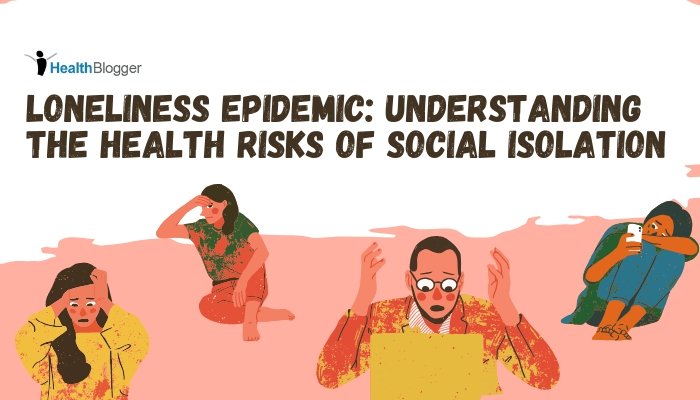In recent decades, more physicians in the United States have pursued an MBA (Master of Business Administration) alongside or after their medical training.

This trend has grown for several reasons, which often differ in intensity or context from other countries such as India. Below are some key explanations for why many U.S. doctors earn MBAs, and why this pattern is less pronounced in other places.
Reasons US Doctors Pursue an MBA
Increasing Complexity of Healthcare
- Administrative Demands: The U.S. healthcare system is complex, involving multi-payer insurance models, extensive regulations, and large health networks. Doctors with MBAs can better navigate these administrative and financial nuances.
- Leadership Roles: Hospitals and private practices often expect physicians in leadership or management roles to understand budgeting, strategic planning, and organizational behavior—all typically covered in an MBA program.
Rising Focus on Healthcare Management
- Multi-Hospital Systems: Many physicians in the U.S. practice within large networks or are affiliated with corporate hospital systems. Administrative or executive positions in these organizations often require business acumen.
- Practice Management: Even independent practitioners handle insurance reimbursements, billing, and negotiations. MBA skills can help them optimize practice efficiency, manage staff, and streamline operations.
Entrepreneurial Opportunities
- Startup and Tech Collaborations: Some doctors are involved in health-tech ventures, medical device innovation, or telemedicine startups. An MBA provides tools for fundraising, pitching to investors, and managing product development.
- Consulting and Healthcare Strategy: Physicians with business expertise can pivot to healthcare consulting, policy, or strategic advisory roles, broadening their career beyond clinical practice.
Personal Career Advancement
- Higher Earning Potential: Management positions or hospital executive roles typically offer higher compensation packages. An MBA can help open these pathways.
- Influence and Autonomy: Doctors seeking more influence in decision-making, beyond just patient-level care, often see an MBA as a way to gain a seat at the executive table.
Why This Is Less Common in India (and Some Other Countries)
Different Healthcare Systems
- More Public Sector Influence: In countries like India, the public healthcare sector and government-run hospitals can dominate. Administrative structures may rely less on Western-style corporate management, reducing the perceived need for an MBA.
- Payment and Insurance Systems: India’s healthcare system has a mix of private and government-subsidized services, but the complexity of multi-payer insurance, as seen in the U.S., is not as widespread. The business/management side for doctors may be less pressing.
Traditional Career Paths
- Focus on Specialization: Many Indian physicians prioritize subspecialties (e.g., cardiology, neurosurgery) for career advancement. Additional fellowships or super-specialty degrees can be more influential than MBAs.
- Public Service and Reputation: Ascension in Indian government hospitals can be tied more to seniority and clinical credentials. A business degree is often not required to head a department or become a hospital administrator.
Cost and Accessibility of MBAs
- Limited Value Proposition: In India, an MBA can be expensive, and the financial or career benefit for a practicing physician might not be as clear. Traditional business programs may not be tailored to healthcare.
- Specialized Healthcare Administration Degrees: Rather than an MBA, some doctors pursue diplomas in hospital administration or public health, which can be more targeted than a broad business program.
Cultural and Educational Priorities
- Clinical Mastery vs. Business Skills: Many doctors in India (and elsewhere) place heavier emphasis on clinical mastery, research, or overseas fellowships. They may view an MBA as peripheral or non-essential to patient care.
- Less Entrepreneurial Culture in Healthcare: While entrepreneurship is growing in India, doctors historically have tended to focus on private clinics or hospital positions. Hospital administration often falls under separate administrative cadres or owners, rather than doctors themselves.
Summary of Key Points
- Why Many U.S. Doctors Earn MBAs:
- To handle complex administrative/financial aspects of a multi-payer system.
- To pursue leadership or management roles requiring business acumen.
- To engage in entrepreneurial ventures in health-tech or private practice management.
- To boost earning potential and career flexibility beyond clinical duties.
- Why This Trend Is Lower in India and Other Countries:
- Different healthcare structures, often more government-centric or less insurance-focused.
- Traditional career advancement relies more on clinical specialization.
- The cost and return on investment for an MBA may be less compelling.
- Cultural norms emphasize clinical excellence, and management often lies outside the physician’s purview.
Overall, the “craze” for MBAs among U.S. doctors reflects the American healthcare environment’s reliance on intricate business and administrative functions, as well as a competitive job market that rewards multidisciplinary skill sets. In India and other countries, the role of physicians in healthcare management can be more limited, and standard practice patterns or alternative qualifications often suffice for leadership, making an MBA less essential.
SEO for health in uSA vs other countries and any statistics to show the percentage of usage of SEO in USA and in various states and also cities vs towns vs villages – also compare with India, European countries, china, Russia and many
Reasoned for a few seconds
Below is an overview of Search Engine Optimization (SEO) usage in the healthcare sector, focusing on the United States compared to other regions (e.g., India, Europe, China, Russia). It also highlights how SEO usage may vary within the U.S. itself (among states, and between urban vs. rural areas). While precise metrics are often difficult to pin down due to proprietary data and rapidly changing digital trends, the following discussion and approximate statistics provide a comparative sense of how SEO is deployed for health-related content worldwide.
Understanding Healthcare SEO
Healthcare SEO involves optimizing health-related websites, hospital systems, telemedicine services, and medical blogs to rank higher in search results (Google, Bing, etc.). Factors impacting healthcare SEO include local SEO strategies (for clinics and hospitals), specialized content marketing, regulatory compliance with health privacy laws, and user trust signals (e.g., authoritative content, peer-reviewed references).
SEO for Health in the USA
High Digital Reliance
- Widespread Internet Usage: Over 92% of Americans have internet access (Pew Research, 2021), making digital marketing and SEO critical for healthcare discoverability.
- Private, Competitive Market: The U.S. healthcare system is largely privatized, with numerous hospital systems, private practices, insurance networks, and telehealth startups all vying for online visibility.
- High Health Expenditure: The U.S. invests significant resources in marketing and technology, including SEO. As a result, competition for top organic rankings is intense.
Variation by State
- Tech Hubs vs. Rural Areas: States like California, New York, and Massachusetts (with strong tech ecosystems) tend to invest heavily in advanced SEO.
- Less Urbanized or Lower-Population States: Hospitals or clinics in these regions may rely more on local SEO or word-of-mouth. SEO budgets can be lower, leading to less robust digital footprints.
- Local Competition: In major urban centers—Los Angeles, Chicago, Houston, etc.—healthcare entities aggressively optimize for local keywords (e.g., “pediatrician near me”), while smaller towns have less competition but also smaller SEO budgets.
Cities vs. Towns vs. Villages
- Metropolitan Regions: Hospitals in large cities often have in-house SEO teams or contract professional agencies to run comprehensive campaigns.
- Smaller Towns: Clinics typically adopt minimal local SEO (Google Business Profiles, local directories, basic on-page optimization).
- Rural Communities: Some rural hospitals may not prioritize SEO significantly if they face limited local competition. However, telemedicine growth may change this dynamic, prompting them to invest in digital outreach.
Approximate Usage/Engagement Stats (USA)
- While no universally agreed-upon “SEO usage rate” exists, surveys from digital marketing associations suggest:
- 80-90% of larger U.S. hospital systems employ dedicated SEO strategies.
- 50-60% of mid-size clinics or specialty practices allocate a regular budget for SEO.
- <30% of small or rural medical practices significantly invest in professional SEO services; many rely on basic local listings.
SEO in Other Countries
India
- Rapidly Growing Market: India’s healthcare is a mix of government facilities and a vast private sector. With digital adoption accelerating, more hospitals target SEO for telehealth and medical tourism.
- Regional Language Optimization: SEO often must accommodate multiple local languages (Hindi, Tamil, Telugu, etc.).
- Budget Variations: Large corporate hospital chains in metro areas (Delhi, Mumbai, Bengaluru) heavily invest in SEO, while smaller clinics in rural India typically have minimal budgets, akin to many small U.S. towns.
Europe
- Public vs. Private Mix: Many European countries have strong public health systems that do not compete in the same manner as in the U.S. This can reduce the “SEO arms race.”
- Multilingual Regions: For instance, in countries like Switzerland or Belgium, healthcare providers must optimize content in multiple languages.
- Data Privacy Regulations: The EU’s GDPR influences how healthcare providers manage user data and track analytics, adding complexity to SEO strategies.
China
- Different Search Ecosystem: Baidu dominates search in China; Google usage is limited. Healthcare organizations must optimize for Baidu’s unique algorithms, which differ from Google’s.
- Government Oversight: Strict regulations around health content marketing. Official approval or licensing can be required for certain medical advertising online.
- Large State-Run Sector: Many major hospitals are government-run; marketing budgets for SEO can be restricted, though private sector health-tech has grown.
Russia
- Local Search Engine: Yandex is a major player; Google ranks second. Healthcare providers must adapt SEO to Yandex’s platform.
- Healthcare System: Heavily public but with growing private clinics in large cities (Moscow, St. Petersburg) that utilize digital marketing.
- Economic and Regulatory Factors: Sanctions and economic volatility can influence how much private clinics invest in marketing. Public hospitals may not engage strongly in SEO.
South American and Other Regions
- Each country has unique digital maturity levels and degrees of public-private healthcare competition. In general, the U.S. stands out for its intense privatization and marketing emphasis, thus fueling higher SEO usage.
Comparative Observations
- Market Structure: Countries with more privatized or competitive healthcare systems (like the U.S.) see heavier SEO investment.
- Regulatory Environment: GDPR (Europe) or state-run controls (China, Russia) shape how health marketers approach data collection, retargeting, and search engine tactics.
- Language Diversity: India, parts of Europe, and Russia require multilingual SEO strategies. The U.S. also does Spanish and other bilingual content, but not to the same degree as some multi-lingual nations.
- Technology Adoption: The U.S. leads in advanced marketing tools. Some emerging markets catch up quickly but vary widely in budget and digital infrastructure.
- Urban vs. Rural: Across all regions, large urban hospitals/clinics are more likely to adopt sophisticated SEO than small rural facilities with limited budgets or immediate local monopolies.
Conclusion
- Why High in the U.S.?
The combination of a privatized healthcare industry, competitive environment, large marketing budgets, and complex insurance structures drives American hospitals and clinics to invest heavily in SEO for patient acquisition and brand visibility. - Why Lower Elsewhere?
Countries with robust public healthcare or less competitive private sectors, and those with regulatory or economic constraints, tend to have lower adoption rates of advanced SEO. However, a growing digital awareness is prompting more clinics worldwide to explore SEO as telemedicine and cross-border medical services expand. - Statistics:
While no single source definitively quantifies “percentage usage of SEO in healthcare,” anecdotal and industry reports suggest that 80–90% of major U.S. hospital systems and large practices have dedicated SEO strategies, a significantly higher figure than in many other countries, where specialized SEO in healthcare might be used by 40–60% of larger private institutions at most, dropping further for smaller or rural providers.
Overall, the “craze” for healthcare SEO is strongest in the United States due to the fierce competition and patient-consumer model, whereas elsewhere—India, Europe, China, Russia—the impetus exists but is tempered by public systems, varying regulations, or more modest marketing cultures. Nonetheless, as digital adoption grows globally, healthcare entities worldwide are increasingly recognizing SEO’s importance.






